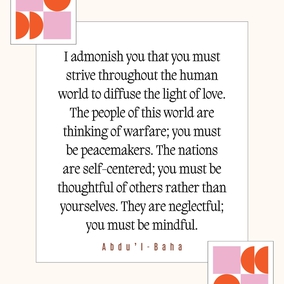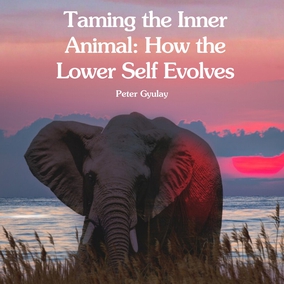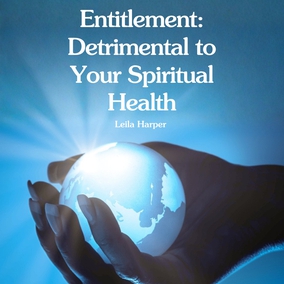The views expressed in our content reflect individual perspectives and do not represent the authoritative views of the Baha'i Faith.
The Baha’i Faith and its predecessor, the Babi Faith, have produced powerful principles and a new spiritual impetus in the world – and they’ve produced insightful scholars of religion, as well.
In this series of articles, Christopher Buck interviews one of those well-known Baha’i scholars, Dr. Nosratollah “Nosrat” Mohammadhosseini, LL.D., M.A., a former assistant professor of law at the University of Tehran and the author of several books and numerous scholarly articles.
Q: Welcome, Dr. Mohammadhosseini! For our readers, I’ll call you “Nosrat,” for short. I’d like our readers to know that you have previously published a major 1100-page work on the life and teachings of the Bab, in Persian, called Hadrat-i-Bab, which means “His Holiness the Bab.”
As your book explains, many parallels exist between the writings, laws and teachings of the Bab and Baha’u’llah. These two twin messengers, who appeared in rapid succession in the 19th century, have had an enormous impact on the world, creating an entirely new global Faith. But the living legacy of the Bab — understood as those Babi laws and teachings explicitly adopted by Baha’u’llah, and which constitute part of the beliefs and practices of Baha’is today — requires some evidence beyond existence of the parallels themselves. I’ve used his method in the previous articles in this series.
Along similar lines, you’ve recently published an article, in Persian, which asserts, in detail, that some if not many of the teachings of Baha’u’llah can also be found in the teachings of the Bab. Is that correct?
A: Yes to both questions, Chris. The article was published in the journal Payám-i-Bahá’í, it’s publicly available for anyone who reads Persian. As for my book on the Bab that you mentioned, it was the product of years of research, beginning when I was just fourteen years old, when I started to study the writings of the Bab.
My first Baha’i teacher, in fact, was the erudite and well-known Baha’i scholar, Mírza Asadu’llah Faḍil-i-Mazandarani, known as Jinab-i-Fadil, born in 1880. According to Abdu’l-Baha, he was second only to Mírza Abu’l-Faḍl-i-Gulpaygani (1844–1914) as the foremost Baha’i scholar of his time.
You are right that I have tried in my book to establish that the majority of the teachings of Baha’u’llah, except for those laws and principles relating to Baha’i administration, can be found in the teachings of the Bab.
As for the article on the Bab you asked me about, I wrote this article for the occasion of the Bicentenary of the Birth of the Bab, celebrated by Baha’is worldwide on October 29, 2019. It appeared in three successive 2019 issues of Payam-i-Baha’i, a Persian-language Baha’i magazine, published under the auspices of the National Spiritual Assembly of the Baha’is of France. The title of this three-part series of my article, translated into English, is “The Babi Movement is a Faint Preview of the Universal Baha’i Faith.”
Q: In the six articles previously published this series, “The Bab’s Living Legacy,” I’ve argued that the Bab fully lives up to Shoghi Effendi’s description as not only the predecessor and herald of Baha’u’llah, but also as the co-founder, along with Baha’u’llah, of the Baha’i Faith. Do the results of your latest research on the Bab support and reinforce this finding?
A: Yes, they do. In the Baha’i writings, we can find the term “co-founder” and also the word “founders” of the Baha’i Faith used to describe both the Bab and Baha’u’llah. The Guardian of the Baha’i Faith, Shoghi Effendi, used the term repeatedly, as he did here when referring to the building of the Shrine of the Bab on Mt. Carmel in the Holy Land:
… all these are to be regarded as successive stages in the history of the almost hundred year long process destined to culminate in the consummation of Baha’u’llah’s irresistible purpose of erecting a lasting and befitting memorial to His Divine Herald and Co-Founder of His Faith. – Shoghi Effendi, Citadel of Faith, p. 53.
Q: What would you say is the primary significance of your recent findings? How does your research deepen and enrich our understanding and appreciation of the Bab as the co-founder of the Baha’i Faith, especially in this important year of the Bicentenary of the Birth of the Bab?
A: Briefly, those principles, teachings and ordinances of the Bab’s that were approved by Baha’u’llah and that have subsequently been believed and practiced by Baha’is, have had infinite influence on the peoples around them and surely the wider civilization, as well.
Q: Of the many examples of teachings of Baha’u’llah previously taught by the Bab, can you give us a list of several such teachings of Baha’u’llah that were not well-known as having their roots in the teachings of the Bab? For the benefit of our readers, would you also please cite your sources for each of these teachings of the Bab that you have chosen to illustrate the findings of your research?
A: In the second edition of my book, Ḥaḍrat-i-Báb (pp. 1001–1072), under the heading, “The Message of the Bab,” I have presented some teachings of the Bab that are quite similar to teachings of Baha’u’llah. Of course, while introducing the writings of the Bab, I had sometimes had to explain his teachings as well. I organized these parallel teachings of the Bab under four main groups: (1) Mystical and Philosophical; (2) Devotional; (3) Ethical: and (4) Social. Here are a few examples among many:
First: Teaching the Cause of God should be done with the utmost love, kindness, and compassion — not with hostility and aggression (The Bab, The Persian Bayan, 16:2). A believer must talk to the people about the truth of the Divine Cause with perfect politeness, modesty, and humility (The Bab, The Arabic Bayan, 6:10).
Second: If a believer finds that a non-believer does not want to accept the truth of the Divine Cause, and insists on rejecting and repudiating it, the believer is not allowed to argue or to contend with the other, as such contention and quarreling have been prohibited (The Bab, The Book of Names, 16:17).
Third: In the writings of the Bab, social tolerance on the part of the believers towards non-believers has been emphasized on numerous occasions. The Bab says that spiritual realities are relative and not absolute. Each person has his own way of recognition of the truth of Divine Cause and no believer is allowed to contend with another person about his way of recognizing and accepting the Cause of God (The Bab, The Persian Bayan, 16:5; The Five Modes, pp. 290–291).
The Bab, moreover, said that even if one of the believers is not acting according to the teachings of the Cause of God, no one is allowed to contend with him, but only to counsel that contumacious person with love and affection (The Bab, The Arabic Bayan, 5:11). To pronounce anyone a heretic, or to issue any verdict of excommunication against any other believer or non-believer, is absolutely prohibited (The Bab, Five Modes, p. 290; Arabic Bayan, 5:11; and Book of Names, 17:11).
Fourth: The Bab stated that all creatures originally have been created properly (níkú), including all human beings. So each person should look in the mirror, each and every day, to realize and appreciate that God has created him or her well, properly and beautifully (The Bab, The Persian Bayan, 8:6). The Bab further says that the human being is the embodiment of Divinity (Commentary on the Surih of Val-Asr). Based on these statements, according to the Bab, human beings are not sinful at birth.
Fifth: A believer’s dedication of his or her life is the main condition of that person’s salvation. The Bab’s teachings emphasized that a believer must be like a candle to be consumed, and which thereby gives light to other people (Seven Proofs, pp. 58–59). In the Bab’s work, “Five Modes” (Panj Shan), the Bab used the metaphor of an oil lamp instead of a candle (pp. 296 and 321). You can find these exact metaphors and soteriology in Baha’u’llah’s writings, as well:
These energies with which the Day Star of Divine bounty and Source of heavenly guidance hath endowed the reality of man lie, however, latent within him, even as the flame is hidden within the candle and the rays of light are potentially present in the lamp. – Baha’u’llah, Gleanings from the Writings of Baha’u’llah, pp. 65-66.
Q: I hope your ground-breaking research article will soon be translated from Persian into English!
Next: Two Faiths that Form One Entity
















Comments
Sign in or create an account
Continue with Googleor